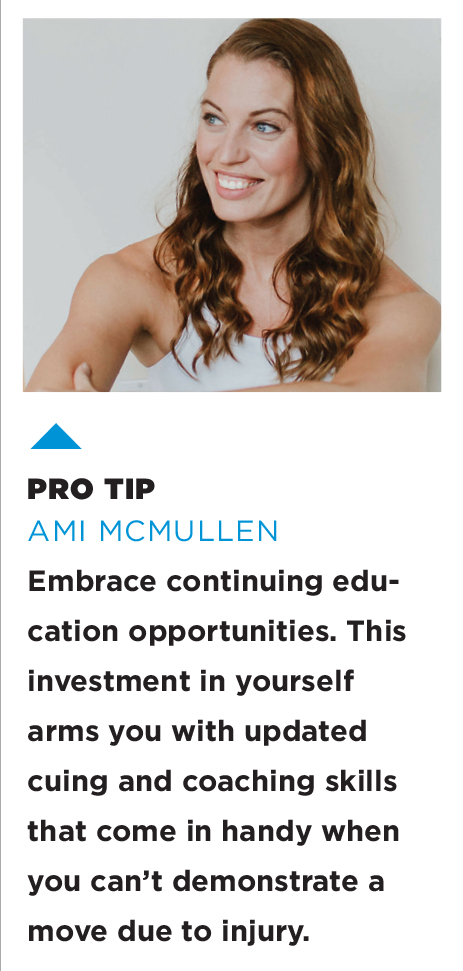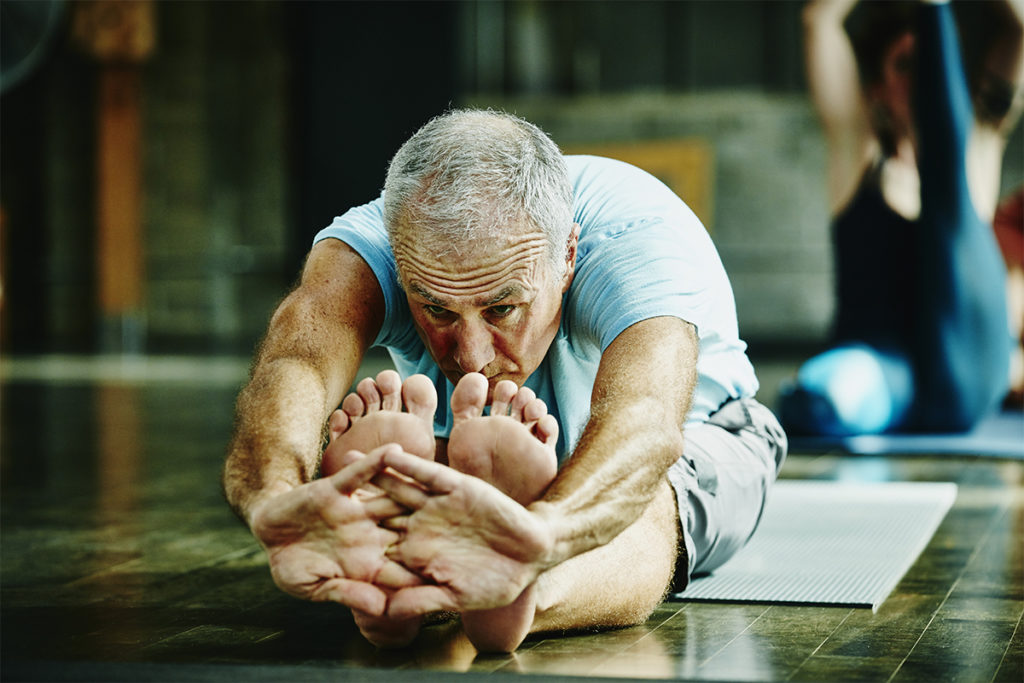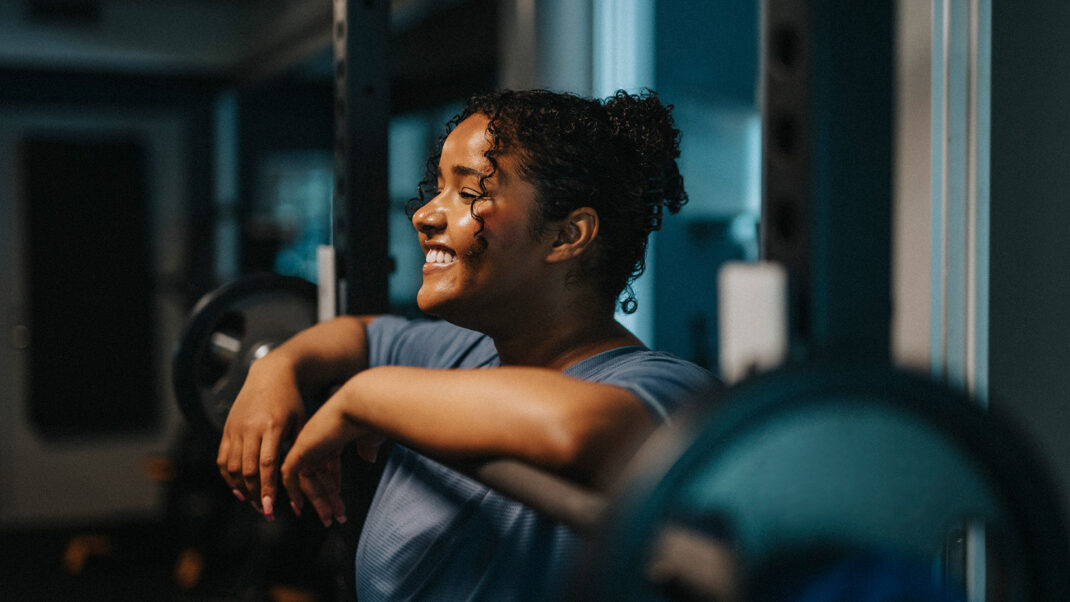Prevent Injuries for Longevity and Fun
Fitness instructors share their self-care strategies.

Like many instructors, you may feel as though you’re expected to do it all and be all things to all people. While this is not sustainable in the real world, you still strive to help your participants live their best lives, and you support them in shaking off the stress of the day so they can experience wellness. However, you also need to ensure that you are likewise sustaining your own physical and mental health.
How do you keep your standards high and your teaching schedule full while also remaining healthy and injury-free? Read on to find out how three avid veteran instructors achieve balance. Their experiences and advice model best self-care practices for a long and successful career.
Remember Who the Workout Is For
It was a sprained ankle that spurred Ami McMullen, owner of Studio Hustle in Louisville, Kentucky, into perfecting her coaching and cuing skills. “I had to sit on the ground and speak the entire workout clearly enough that my class could follow it,” she says. And that skill has paid off; after all, the more telling you do, the less showing you have to do—and too much showing can lead to repetitive stress injuries.
Better cuing and coaching not only guard against overuse but also allow students to get the most out of your class. “If you’re doing the whole workout with them, you are not concentrating on them,” says McMullen, who has been teaching group fitness since 2005 and at one time taught as many as 32 classes a week.
Additionally, effective cuing helps when you’re walking participants through moves like pushups, where people can’t see you and they’re simply receiving voice directions. And if you have an injury, skilled cuing can save the class from falling to pieces, because people will be used to following your voice.
Even when McMullen is in top shape, she’ll demonstrate only the first 20 seconds or so of a move, plus modifications for different levels and a nonimpact option, then she’ll walk around to check form.
Of course, some formats, such as indoor cycling, are best done with the class. “You have to figure out how much demand you can put on your body,” says Aileen Sheron, a 40-year fitness industry veteran based in West Covina, California. However, it’s also a good coaching technique to get off the bike from time to time and engage with riders.
Recognize That Variety Is Key
They say variety is the spice of life—and it’s also your ticket to a long, healthy career. Tricia Murphy Madden, national education director and co-creator of Savvier Fitness and a finalist for 2019 IDEA Fitness Leader of the Year, has had a 28-year teaching and presenting career that’s been primarily injury-free. She attributes it to the fact that she’s always taught a variety of formats that incorporate strength, cardio and flexibility.
“I always notice when I am out of balance—maybe teaching one too many cycling classes—and suddenly I am more fatigued and feeling it in my body in the wrong way,” she says.
In addition, she finds that instructors who are constantly catching colds or the flu are often experiencing an imbalance. “Those teaching 14 of one modality a week seem to be the ones most plagued with illness,” she notes.
“People have been pushed into specializing, but you need to diversify your skills so you don’t get tapped out,” Sheron says. “Expanding your offerings might seem difficult if you consider yourself a ‘Zumba® teacher,’ but it will allow you to continue in the career you love.”
Another option is to keep updating your skills and educate yourself on new moves, advises McMullen. “Then you can avoid resorting to high knees, flipping tires or running laps around the building,” she says. McMullen also recommends investing in the right equipment so you can vary your routine with, say, kettlebell swings or medicine ball tosses. “There are tons of ways to get your heart rate up but [also] stay safe.”
Turn the Music Down
An often-overlooked area of instructor wellness relates to hearing and vocal injuries. “I am definitely the instructor with the quietest music,” says Madden. She finds that the current tendency in the industry is to play music much higher than the recommended decibel level, a practice that can hurt your hearing and strain your voice.
“I’ve always cared about my voice and my ears for the same reason I take care of my body; they are my income,” she says, noting that she often warns instructors of the risks to their career longevity if they continue to teach with music at high volumes. “Rely on class design, community and your coaching to differentiate yourself,” she says. “If you are counting on volume to do the work for you, you are cheating yourself and the class and potentially causing harm.”
Remember Flexibility
Sheron has noticed that many instructors don’t focus as much as they could on flexibility. And while cardio and resistance are important components of any program, range of motion should rate, too, she says. “It’s what will keep you moving over the long run and should be part of any effective cross-training program.”
Flexibility work should incorporate a range of options. “Just as you wouldn’t do one type of biceps curl over and over, you should do different types of stretching. The more variety you bring to the table, the better your body will learn to adapt to various stresses,” she says. For example, she does a combination of myofascial release and different traditional stretching—including rotational work—and uses foam rollers, tennis balls and stretching straps.
Most clubs don’t make room for flexibility on the schedule, unless they offer barre or yoga, says Sheron. “It’s an important piece we are forgetting if we fail to educate instructors, and thus students.”
Model Good Recovery Practices

Make sure students see you are practicing positive recovery strategies.
Anyone can get injured, but pushing through pain sends your class the wrong message, says McMullen. She makes sure students see she is backing off when she is recovering, and she’ll typically explain why she is not doing some parts of a workout. For example, she might tell the class she’s avoiding jump squats because of a foot injury or not doing a certain weight move because of a shoulder tweak.
On this same topic, don’t hesitate to seek expert advice if you have a recurring injury, says Madden. When she began experiencing intermittent lower-back pain, she spoke to a physical therapist who recommended she strengthen her glute muscles with a kettlebell plan. Once she incorporated those moves, the pain vanished.
Be Savvy About Shoes and Apparel
As a professional instructor, you need to make sure your gear is doing its job. McMullen recommends trying different types of shoes to find what works best for you and your environment, whether you’re teaching on a hard surface, like concrete, or on a more forgiving workout floor. Rotate shoes depending on the classes you teach, and replace footwear as needed. Madden recommends replacing shoes every 3–4 months if you teach step, high/low or dance fitness classes.
And, she says, let’s talk about women’s breasts, too. “As a 32DDD—and yes, I have survived as an instructor all of these years being this size—I am incredibly mindful of supporting [my breasts] for high- and medium-intensity workouts.” While good sports bras are available for larger breasts, these bras are consistently more expensive than others. Even so, says Madden, this is an area where you should never go for a “deal.” She pays roughly $80–$120 per sports bra and then makes sure she washes and cares for them appropriately. “It’s well worth the investment and effort for healthy breasts.”
Prioritize Mental Health
Sometimes, you just have to pull back, notes McMullen. Her breaking point came when she was taxing her sleep schedule by teaching too many early-morning classes. “I wasn’t running my business as a business,” she says. “I realized that I needed to get instructors to handle some of the load and found that I can have a break and my studio can still run,” she says. Everyone needs downtime to rejuvenate; you have to decide what parameters work for you and set your own boundaries.
She recommends asking yourself what would feel like a dream job. Would it be coming home every evening at 6 p.m. for dinner? Then focus on morning or lunchtime classes or vice versa. “You don’t have to [accept] every class that’s offered at every gym. You can mold your schedule to your needs and preferences so that you don’t get burned out.”
Being cognizant of making good choices is good for your mental and physical health, Madden says. She found that when she was out of balance, her diet would suffer, as she would repay herself with “treats,” such as an extra glass of wine or indulgent snack. “Once I pull back the reins and balance my teaching schedule, my physical and mental wellness seem to always improve,” she says. She also advocates taking classes that give you a break, such as yoga or mobility work.
Specialize in Self-Care
As instructors, you focus on helping clients achieve wellness—but you can’t do that if you don’t focus on yourself first. The bottom line is that keeping yourself safe from injury has benefits for both your body and your mind—not to mention your wallet.
“Often students have planned their whole day around that hour they spend with you, so we have to make sure we are there for them to make it the class they wanted,” says Sheron. To do that successfully, you have to be at your own best.
Cathie Ericson
Cathie Ericson is a freelance writer who specializes in health/fitness and business topics. She loves group fitness classes, especially now, especially outdoors, even in the variable Oregon weather. Find her @cathieericson.







